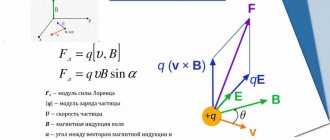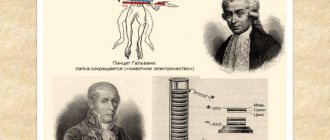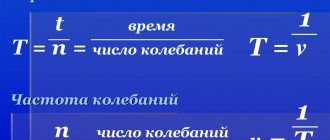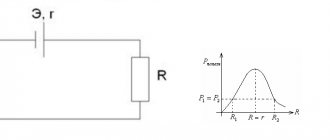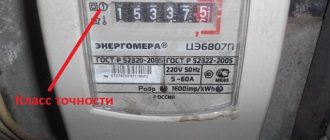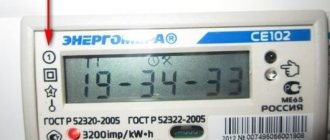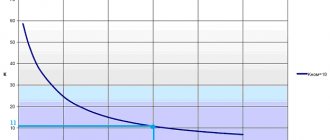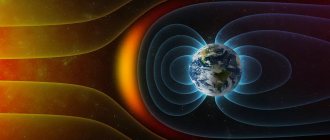From the history of magnetism
In the VI century. BC. In ancient China, a mineral (rock) was discovered that attracted iron objects. The Chinese gave it the name “chu-shi”, which translates as “loving stone.” “Loving” - in the sense of attracting.
The word “magnet” was introduced into use by the ancient Greeks in the 5th century. BC. There is a legend that the first samples of these unusual “black stones” were found near the city of Magnesu, where deposits of magnetite were discovered. Magnet is translated as “stone from Magnesia”.
Magnetite is a black iron ore mineral, iron oxide Fe3O4, which has natural magnetic properties.
Popular message topics
- Arctic Ocean
The smallest of all the oceans on the globe is the Arctic Ocean. Of course, the only thing that distinguishes it from other waters is that it is located in a harsh climate zone. This significantly affects the temperature of ocean water, - Newton's Laws
Newton's Laws are three laws of classical mechanics that allow one to formulate the equality of a system based on mechanics, provided that what acts on the bodies inside the system, that is, a force, is known as a quantity. - Bees, wasps, bumblebees
Our nature is too rich in a wide variety of insects. Its prominent representatives are wasps, bumblebees and bees. What they all have in common is that they have a sting and are yellow and black in color. All these insects strive to pollinate the plant.
Definition and main features of a permanent magnet
A permanent magnet is a solid object that can maintain a state of magnetization for a long time. The state of magnetization means the presence of a magnetic field that affects (attracts) metal objects.
Permanent magnets can be of natural origin (magnetite) or artificial, which are made from iron, steel, nickel, cobalt and other rarer metals. Artificial magnets are obtained by magnetizing workpieces in a strong magnetic field. These magnets can come in different shapes and sizes.
Rice. 1. Permanent magnets of different shapes. Strip and arc magnets
The main feature of a permanent magnet is the presence of two magnetic poles: the south - S, and the north - N. Magnetic lines are directed outside the permanent magnet from the north pole to the south, and inside the magnet from south to north.
Neodymium permanent magnets
They represent the latest and most significant development in this field over the past decades. Their discovery was first announced almost simultaneously at the end of 1983 by metal specialists from Sumitomo and General Motors. They are based on the intermetallic compound NdFeB: an alloy of neodymium, iron and boron. Of these, neodymium is a rare earth element extracted from the mineral monazite.
The enormous interest that these permanent magnets have generated arises because for the first time a new magnetic material has been produced that is not only stronger than the previous generation, but is more economical. It consists mainly of iron, which is much cheaper than cobalt, and neodymium, which is one of the most common rare earth materials and has more reserves on Earth than lead. The major rare earth minerals monazite and bastanesite contain five to ten times more neodymium than samarium.
Why does a permanent magnet have a magnetic field?
In 1820, the Danish physicist Hans Oersted, while studying electrical phenomena, discovered that if a magnetic compass needle was placed near a metal wire, then when the electric current was turned on, the needle deviated by a noticeable angle. Although he could not explain this phenomenon, after the publication of these results, the French scientist Andre-Marie Ampère suggested that the movement of electric charges in a wire - an electric current - leads to the appearance of a magnetic field. Interaction occurs and in practice the needle is deflected.
Rice. 2. Ampere's hypothesis. Ampere's model for internal currents in magnets
Ampere used the same idea to explain the nature of the magnetic field of permanent magnets. According to his theory, the magnetic field appears due to the presence in magnets of continuously circulating circular currents, which are equivalent to small magnets. These currents add up, reinforce each other and create a common magnetic field inside and outside the magnet. A magnet as a whole is a set (sum) of these magnets.
Our planet is a huge permanent magnet. The schematic diagram of the Earth's permanent magnet, which creates its magnetic field, is similar to the nature of an ordinary, natural magnet. The Earth's core has an outer shell of molten metals (iron, nickel and a number of impurities) at a temperature of more than 4000 K0. The hot mass, consisting of a mixture of charged particles, rotates along with the Earth. As a result, continuously circulating flows and vortices arise, which are the main reason for the appearance of the Earth's magnetic field.
Physical mechanism of permanent magnetization
To explain the functioning of a permanent magnet, we must look inside it down to the atomic scale. Each atom has a set of spins of its electrons, which together form its magnetic moment. For our purposes, we can consider each atom as a small bar magnet. When a permanent magnet is demagnetized (either by heating it to a high temperature or by an external magnetic field), each atomic moment is oriented randomly (see figure below) and no regularity is observed.
When it is magnetized in a strong magnetic field, all atomic moments are oriented in the direction of the field and, as it were, interlocked with each other (see figure below). This coupling allows the permanent magnet field to be maintained when the external field is removed, and also resists demagnetization when its direction is changed. A measure of the cohesive force of atomic moments is the magnitude of the coercive force of the magnet. More on this later.
In a more in-depth presentation of the magnetization mechanism, one does not operate with the concepts of atomic moments, but uses ideas about miniature (of the order of 0.001 cm) regions inside the magnet, which initially have permanent magnetization, but are randomly oriented in the absence of an external field, so that a strict reader, if desired, can attribute the above physical The mechanism is not related to the magnet as a whole. but to its separate domain.
How and what are permanent magnets made from?
Magnetites have rather weak magnetic properties. Industrial mass production of artificial magnets of various sizes has been established. The starting materials for this are alloys based on metals: iron Fe, nickel Ni, cobalt Co, neodymium Nd, samarium Sm. Blanks from these alloys are produced by casting, pressing or sintering. They are then placed in a very strong, uniform magnetic field created by electromagnets. When exposed to a magnetic field, magnetized particles are directed in one direction. This aligns the polarity of the future magnet. As a result, the workpieces are strongly magnetized and become independent permanent magnets.
Recently, polymer permanent magnets (magnetoplasts) have gained great popularity. They are made from a mixture of magnetic powder and a polymer (plastic) elastic additive, such as rubber. The magnetic properties of magnetoplasts are low, but they are quite sufficient for the manufacture of various useful devices, for example, refrigerator magnets, plastic cards, demonstration and educational boards.
Surface (ampere) currents
The magnetic fields of permanent magnets can be considered as the fields of some associated currents flowing along their surfaces. These currents are called Ampere currents. In the usual sense of the word, there are no currents inside permanent magnets. However, comparing the magnetic fields of permanent magnets and the fields of currents in coils, the French physicist Ampere suggested that the magnetization of a substance can be explained by the flow of microscopic currents, forming microscopic closed circuits. And indeed, the analogy between the field of a solenoid and a long cylindrical magnet is almost complete: there is a north and south pole of a permanent magnet and the same poles of the solenoid, and the patterns of force lines of their fields are also very similar (see figure below).
Where are permanent magnets used?
The remarkable properties of permanent magnets are used in various fields of science, technology, production, and in everyday life. Here are just a few of them:
- Recording and storing information (magnetic tapes, computer floppy disks and disks);
- Plastic cards for various purposes (financial, bonus, access control);
- Microphones, loudspeakers, sound equipment;
- Electric motors, generators, transformers;
- Compasses;
- In measuring instruments with a deflecting pointer, for example, in ammeters;
- Plastic magnets for use in educational exhibition purposes;
- Fridge magnets;
- Making fasteners for clothes and bags:
- Furniture clamps (closing doors);
- Kids toys.
Rice. 3. Areas of application of permanent magnets
The palm among the most powerful artificial magnets today is held by magnets that include rare earth metals: neodymium (Nd-Fe-B alloy) or samarium (Sm-Co alloy). These magnets can maintain their properties without demagnetization for 30 years.
Traditional materials for permanent magnets
They have been actively used in industry since 1940 with the advent of alnico alloy (AlNiCo). Previously, permanent magnets made of various types of steel were used only in compasses and magnetos. Alnico made it possible to replace electromagnets with them and use them in devices such as motors, generators and loudspeakers.
This penetration into our daily lives received a new impetus with the creation of ferrite magnets, and since then permanent magnets have become commonplace.
The revolution in magnetic materials began around 1970, with the creation of the samarium-cobalt family of hard magnetic materials with previously unheard-of magnetic energy densities. Then a new generation of rare earth magnets was discovered, based on neodymium, iron and boron, with a much higher magnetic energy density than samarium cobalt (SmCo) and at an expectedly low cost. These two families of rare earth magnets have such high energy densities that they can not only replace electromagnets, but be used in areas that are inaccessible to them. Examples include the tiny permanent magnet stepper motor in wristwatches and the sound transducers in Walkman-type headphones.
The gradual improvement in the magnetic properties of materials is shown in the diagram below.
